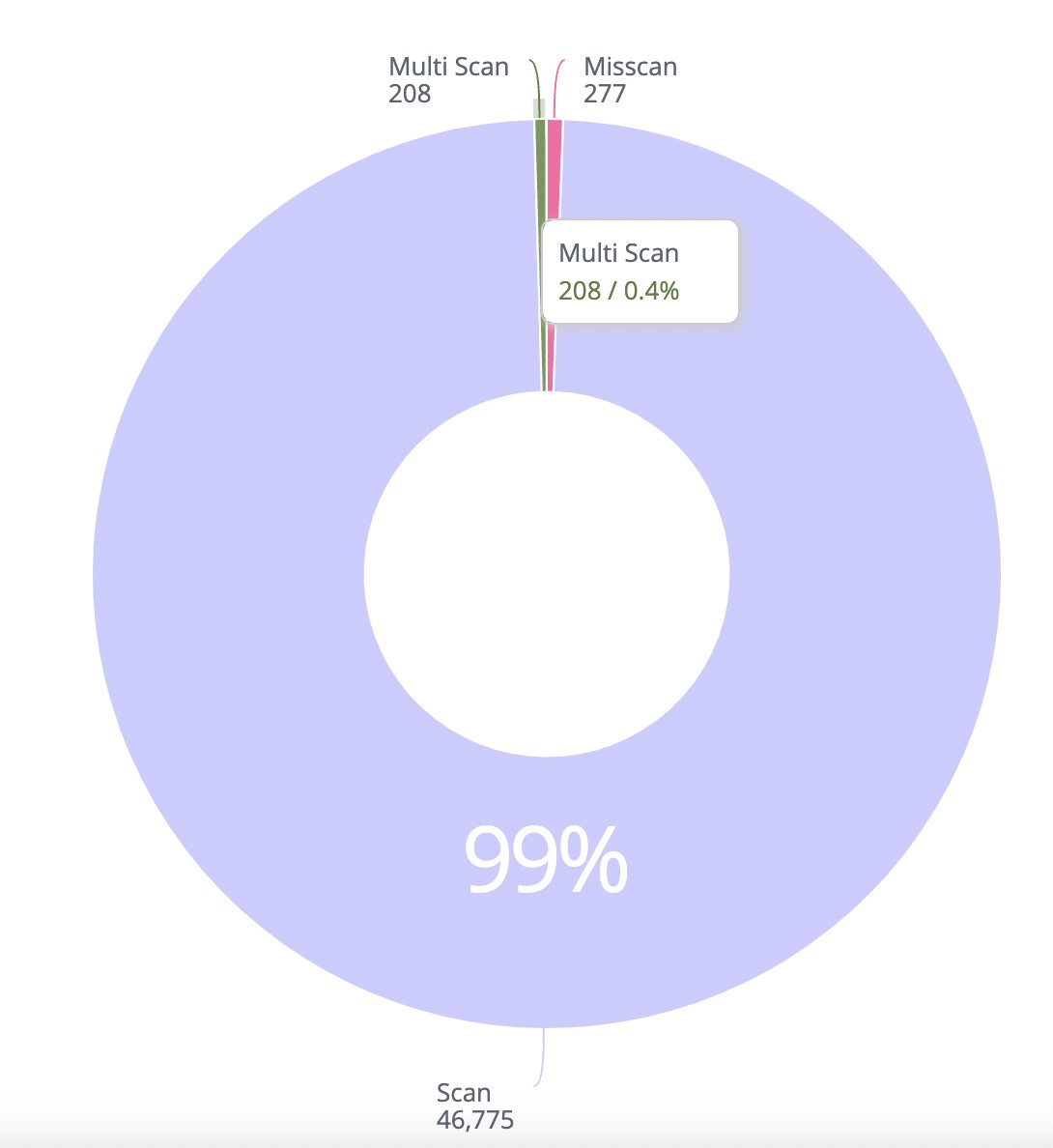Authors:
Srija Ganguly, Evgeny Shevtsov, Judy Atallah, Phil Brown, James Frank, Andrei Khaitas, Wacho Slaughter
Abstract:
This disclosure is proposing a method of identifying such multiple (or multi) scans of the same item and potentially reducing sensitivity of the tracking system. It is also intended to differentiate such multi-scans with that of actual fraud so that the lane raises alerts in cases deserving the assistant’s attention and ultimately reducing the number of false positive alerts.
Background:
With Innovation team’s recent Loss Prevention solution rolling out to our clients, it gives a glimpse into the reality of items whose scans are missed at the Self-Checkout (SCO) lane. With every un-scanned item that’s passed over to the bagging area the system is likely to raise a fraud alert on the screen. Now, there are cases where a shopper has multiple quantities of the same item, and they scan one of the items multiple times to incorporate all the other counts of the item in the transaction. In such a case when the shopper attempts to pass all the other items (except for the first one scanned multiple times) over to the bagging area, the system will raise alerts for those items too. For example, if a shopper has 5 ketchup bottles, they can scan the first bottle 5 times and transfer all the 5 bottles to the bagging area, which is totally legit. The system with the loss prevention solution would however raise alerts that 4 bottles were probably not scanned.
This disclosure is to identify such multiple (or multi) scans of the same item and potentially reduce sensitivity of the tracking system. Until now about 0.4% of transactions a day are multi-scan cases which may seem like a small number but if clubbed with the actual fraudulent scans, it would double the percentage of alerts that are raised on the lane (see the image for statistics). It is also intended to differentiate such multi-scans with that of actual fraud so that the lane raises alerts in cases deserving the assistant’s attention and ultimately reducing the number of false positive alerts.
Description:
The solution to the problem requires an ability for the Loss Prevention solution to realize when multi-scans are happening, and then being able to take appropriate actions to prevent fraud alerts. One strategy could be to use some form of flags that could be raised for a specific item when the camera notices a scenario where the shopper scans that item multiple times. When raised, this flag should tell the system to expect subsequent transfers of items which are going to be un-scanned and it should also note the number of items (of the same type) that can be bagged according to the number of scans performed by the shopper. Details about the item can be retrieved using the events from SCO lane and can be compared with what item should have been transferred without scanning. Once all the items are bagged, the flag can be reset.
It's possible that the shopper plans to scan some other products before transferring those extra items (which have been scanned before), therefore the system should be able to handle mismatch in the order of items transferred. For example, after scanning a Ketchup bottle 5 times, the shopper may transfer 1 bottle and start scanning a toothpaste or soap bar before transferring 4 of the other ketchup bottles. Now consider an example where a shopper scans a Ketchup bottle 5 times, but somehow bags 6 of such bottles, then according to the solution described, the system (loss prevention and SCO events) expected the shopper to transfer 5 ketchup bottles but for the 6th one the lane is free to raise loss prevention alert.
The idea is to help the loss prevention solution to differentiate between the legit multiple scans and the actual fraudulent (or missed scans) activities. Eliminating false positives is an integral part of the future of this solution.

TGCS Reference 3188









